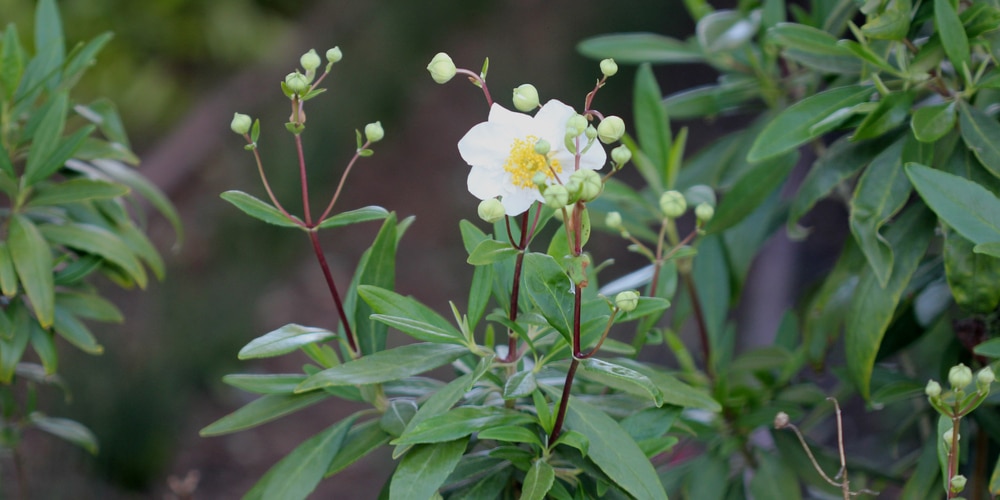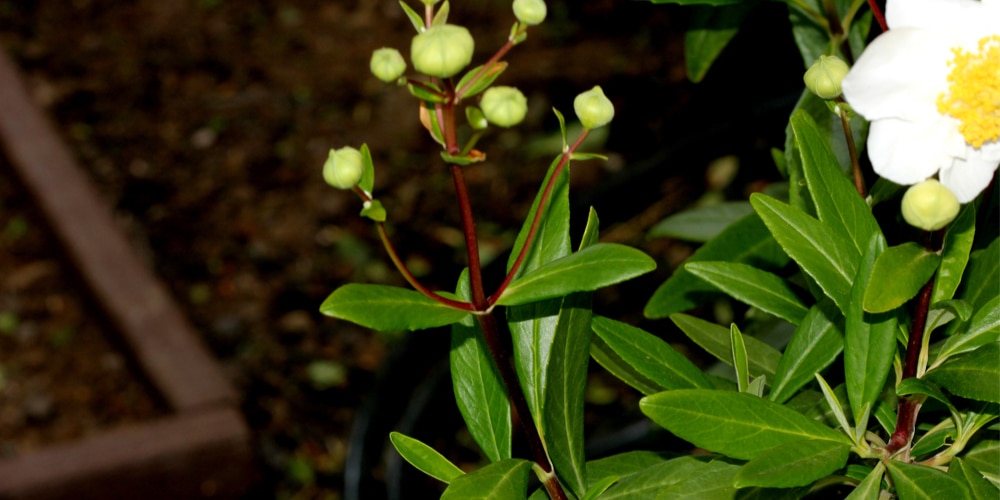Carpenteria californica is an evergreen flowering shrub that grows from southern Oregon through coastal California to Mexico. Growing in U.S. Department of Agriculture plant hardiness zones 8 through 10, carpenteria produces an abundance of fragrant blossoms throughout spring and summer. The beautiful white flowers will attract bees and other wildlife to your yard.
These plants are commonly called bush anemone and are relatively easy to grow and care for, making it a popular choice for home gardens. Let’s look at how to grow and care for a carpenteria californica plant.
What is a carpenteria californica plant?
The carpenteria californica plant is part of the hydrangea family, which has the botanical name Hydrangeaceae. It can grow to heights of 3 to 10 feet with an equal spread. It has a moderate growth rate, but it may be slow to establish during the first year or two after planting.
The carpenteria californica has an upright growth habit with branches that are covered in dark green leaves. These plants are native to the Sierra Nevada area of California and have spread across the state. They naturally grow at higher altitudes and can cope with cool weather.
The plant’s foliage is green and glossy on the top and a greenish-blue underneath. Each leaf measures approximately 2 to 4 inches long. The older plants have bark that is slightly flaky.
These plants produce small, fragrant, and white flowers with approximately seven petals. Each flower has a yellow center with pollen and attracts bees and butterflies. Mature plants produce large, showy clusters of flowers all along the branches, which last from early spring until mid-summer. The plants have small, leathery textured fruits in the late summer and early fall. These are filled with small seeds from which the plant is able to reproduce.
Caring for a carpenteria californica plant
Carpenteria californica likes partial to full sun exposure and moist, well-drained soils. It is not drought tolerant, and it does not tolerate standing water or poorly drained soils.
The soil pH should be between 6.0 and 7.5 for best growth. Applying a layer of mulch around the plant’s base will help keep the soil moist and cool. They can reach heights of 8 to 10 feet tall, so provide plenty of space in your garden. Here are some tips to help you care for a Carpenteria Californica plant:
Sunlight and temperature needs
Carpenteria californica plants grow best in full sun or partial shade and well-drained soil. They do best when they receive morning sun and are in the shade during the hotter part of the afternoon.
As these plants naturally grow at high altitudes, they don’t like very hot weather and are winter hardy, coping with colder temperatures. They can cope with freezing temperatures as low as 14° degrees Fahrenheit.
Watering requirements
Water regularly, especially during the first year after planting, until the plant is well established. Once established, water the plant during dry periods in summer and reduce watering in winter. These plants are fairly drought tolerant but shouldn’t be neglected. Soil moisture should be even throughout spring and summer but minimal during autumn and winter when the plant is dormant.
Be careful not to overwater your plant as this could lead to root rot which will cause yellowing of the leaves and affect the health of your plant. In the worst cases, root rot will kill your plant. To avoid overwatering, you can test the top two to three inches of soil to see whether it’s dry before watering again.
Soil type
Carpenteria californica tolerates most soil types but prefers loam or clay-like soil, which is well-draining. Decomposed granite is the best material for growing these plants. The soil pH should be between 6.0 and 7.5 for best growth which is neutral or slightly acidic or alkaline, as the plant copes well with a variety of soil types.
Fertilization
Fertilize twice a year with an all-purpose fertilizer; alternatively, add some mulch around the plant. You can use compost or manure for fertilizing if you’re looking for an organic option.
Pruning
Pruning is necessary to maintain the desired shape and to remove any dead or damaged branches throughout the year. Prune after flowering in the fall to remove spent blooms and to shape as needed. It’s best not to remove older branches as they may not regrow. Instead, cut the plant back to its lower buds to encourage new growth in the following growing season.
Pests and disease
Insects and diseases rarely cause problems for carpenteria californica plants. However, occasionally they can be affected by scale, mites, root rot, and powdery mildew.
Treat scale by hosing down the plant with a strong stream of water to remove it manually. To treat mites or root rot, apply an insecticidal soap or fungicide to kill these pests without harming beneficial insects or beneficial soil organisms. If powdery mildew appears, treat the leaves of the shrub with a fungicide.
Propagation
Carpenteria californica can be propagated by seed or cuttings. Seeds can be sown in spring or fall. Alternatively, take 4-inch softwood cuttings in late spring or early summer and place it in water until the roots begin to grow. Once your cutting has taken root, you can plant it in the soil in an area that gets partial shade and morning sun.
Conclusion
Carpenteria californica is a beautiful, easy-to-grow flowering shrub that adds color and fragrance to any garden. With proper care, it will thrive for many years. It has dark green compound leaves, fragrant flowers, and showy fruit pods. It grows best in full sun or partial shade with well-drained soil, but it doesn’t require much upkeep.
The carpenteria californica plant is easy to grow and care for in USDA zones 8 through 10. The plant is most commonly grown for ornamental purposes and looks great as part of a woodland or wildflower garden. It will help to attract wildlife such as bees, butterflies, insects, and birds to your yard. Enjoy watching this beautiful flowering shrub thrive in your garden!


